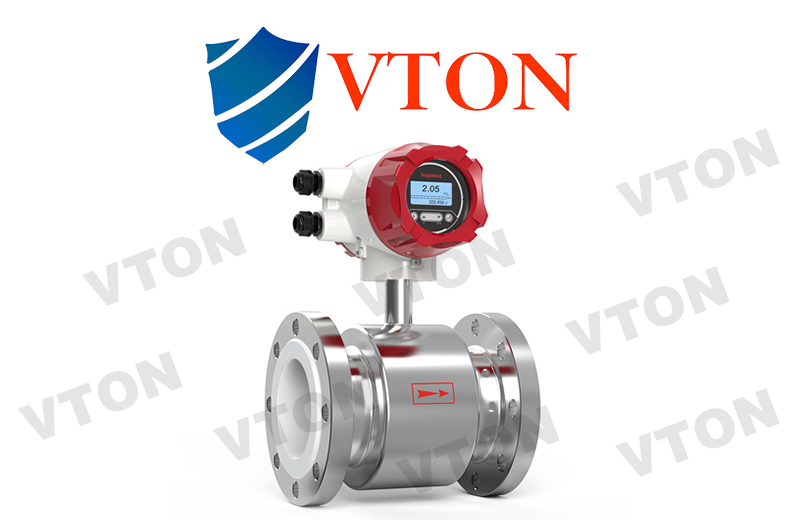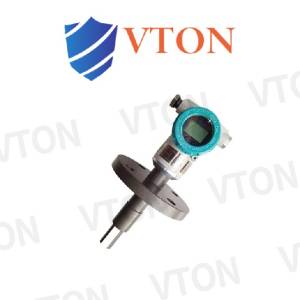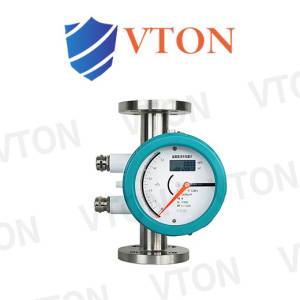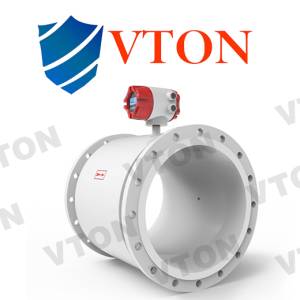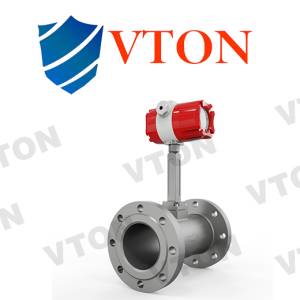Description
1. Overview of PTFE Lined Electromagnetic Flow Meter
VTON PTFE-lined electromagnetic flow meters leverage Faraday’s law of electromagnetic induction to deliver precise volumetric flow measurements. Designed for aggressive and corrosive media, these meters excel in measuring liquids with a conductivity of ≥5 μS/cm. They are widely used in industrial processes, water treatment, and other applications requiring accurate flow measurement.
Applications:
- Measurement of acids, alkalis, and saline solutions
- Municipal water and wastewater management
- Pulp, slurry, and mining applications
- Industrial processes in chemical, petrochemical, and environmental sectors
2. Working Principle
The electromagnetic flow meter operates on the principle of electromagnetic induction. As a conductive fluid flows through the magnetic field within the meter, a voltage is generated. This voltage, proportional to the flow velocity, is detected by electrodes positioned on the pipe wall and converted into a flow signal.
Formula:
E = B · V · D · K
Where:
- E = Induced voltage
- B = Magnetic flux density
- V = Fluid velocity
- D = Distance between electrodes
- K = Calibration constant
The sensor transmits the signal to the converter, which processes it to display real-time and cumulative flow data. The system also supports outputs such as 4-20mA, frequency, and RS485 communication, with options for HART and MODBUS protocols.
3. Product Features
- Corrosion Resistance: PTFE lining ensures durability for highly corrosive media, including strong acids and alkalis.
- High Precision: Offers accuracy levels of 0.5% and 0.2%, suitable for demanding industrial applications.
- No Pressure Loss: The streamlined design eliminates obstructions, minimizing energy consumption.
- Robust Signal Processing: Features advanced digital processing for stable and reliable measurements.
- Comprehensive Outputs: Supports 4-20mA, frequency output, RS485, and optional MODBUS/HART protocols for system integration.
- Multiple Electrode Materials: Options include Hastelloy B/C, titanium, tantalum, and platinum-iridium for compatibility with various media.
- Wide Application Range: Suitable for pipe diameters ranging from DN3 to DN300, with flow speeds up to 15 m/s.
- Self-Diagnostic Capabilities: Built-in alarms for empty pipe detection, excitation current issues, and system errors.
- Flexible Installation: Vertical or horizontal installation options with straight pipe sections of ≥10DN (upstream) and ≥5DN (downstream).
4. Technical Specifications
- Measurement Diameter: DN3 ~ DN300
- Minimum Conductivity: ≥5 μS/cm
- Lining Materials: PTFE, F46, PFA, and various rubber options
- Electrode Materials: Molybdenum stainless steel, Hastelloy B/C, titanium, tantalum, platinum-iridium alloy
- Working Temperature: -20℃ ~ 50℃
- Flow Velocity Range: 0 ~ 15 m/s
- Accuracy: 0.5% or 0.2%
- Power Supply: AC220V, DC24V, or battery-powered
- Protection Rating: IP60, upgradeable to IP68
- Output Options: 4-20mA, RS485, MODBUS, HART (optional)
- Environmental Conditions: Temperature -25℃ ~ 60℃; Humidity <95%
5. Installation Requirements
- Ensure the pipeline remains full at the measurement point to avoid incomplete readings or gas accumulation on the electrodes.
- Install the meter in vertical pipelines for liquid-solid mixtures to reduce wear on the liner and extend lifespan.
- Maintain straight pipe sections of at least 10DN upstream and 5DN downstream.
- Position the meter to avoid turbulence or vibration in the pipeline.


